J S Bach was very much at the spiritual centre of this cunningly devised programme for the South Bank’s current Alfred Schnittke fest: Between Two Worlds. But by the time we emerged shaken but, in my case, not stirred by Schnittke’s preposterous 3rd Symphony the entire Austro-German symphonic legacy had flashed before our ears. Well, not flashed exactly, rather ground to a halt from a slow rewind of ever diminishing returns.
But back to Bach. His Chorale “Es ist genug” is the music of sorrowful farewell passing through Alban Berg’s orchestra in the closing pages of his Violin Concerto and only he could make a muted bass trombone sound so tender in the moment of parting. But Vladimir Jurowski had anticipated, indeed prefaced, its appearance there with Magnus Lindberg’s richly adorned setting Chorale so that it became the high altar at which the young life of Manon Gropius – the daughter of Alma Mahler and architect Walter Gropius whose death at 18 became the motivation for Berg’s concerto – could be celebrated.
Another connection was established in the fragrant middle section of Webern’s febrile Passacaglia Op.1 which suddenly seemed to share so much with the sweet reveries, the innocently skipping ländlers, of the first movement of Berg’s concerto. Leonidas Kavakos addressed this ceremony of innocence with a purity and restraint bordering on the casual. He is one of those players who gives nothing away in his physical demeanour and what you see is often very different from what you are hearing. Close your eyes and the sense of “involvement” can redouble.
But what we see in an expressive musician’s body and face is important and I am wondering whether Kavakos’s physical impassivity contributed here to an impression of curious detachment from the concerto. Good though the playing undoubtedly was (and always is from this player), it felt like a rehearsal. The extraordinary drama of the second movement was certainly there in the resourceful London Philharmonic Orchestra but the cadenza-like angst of the solo part was curiously theoretical, a compendium of seemingly unmotivated scales, double-stoppings, and stinging pizzicati. Perhaps it was Kavakos’s intention to keep the emotion contained in the abstract manner of Bach partita but in doing so he surely undermined the serene coming of the chorale where all subjectivity is put aside and beauty is an objective simplicity – a benediction. The final pages were certainly just that but I just didn’t feel that they had been earned.
I felt that way again, only more so, at the close of Schnittke’s 3rd Symphony where a disarmingly trite theme (vaguely Wagnerian) first heard emerging from a fantastical divisi string rip-off or homage – whichever you choose to call it – of Wagner’s Rhinegold prelude comes full-circle like a like a tired old acquaintance you were hoping you’d never meet again. If ever there were a case of an unearned and unwelcome return, this is it. In the preceding 50 minutes or so we are treated to one of Schnittke’s hallucinatory time-warp fantasias where Gothic organ-buttressed upheavals dissolve into 18th century harpsichord-flecked minuets which in turn linger in the disembodied strains of a salon piano. An explosion of electric guitar suggests the Grateful Dead on a trip to go symphonic and there are deafening collages behaving badly like a Russo-German Charles Ives without the self-discipline.
Make no mistake: it’s quite a ride performed with tremendous conviction as it was here by Jurowski and the orchestra – but how seriously are we supposed to take it? Very - if the tone of the big Mahlerian adagio finale is to be believed. But there’s the rub: when music is all about allusion – to the point where the composer all but disappears from the equation – the effect is at best second-hand. I don’t doubt the integrity of Schnittke’s homage to a great tradition but I didn’t believe a note of it – not one note.




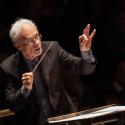



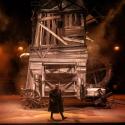
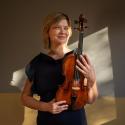
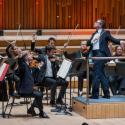


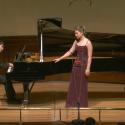
Add comment